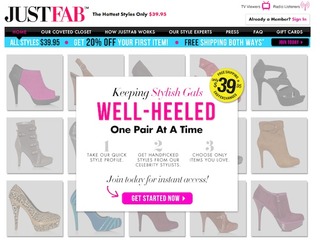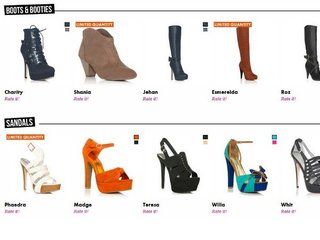Value-based obesity care solution Ilant Health adds $2.5M to its seed round
The company initially raised $3 million in seed funding when it launched in October
Read more...
When JustFab and ShoeDazzle announced their merger Wednesday, it almost felt Orwellian. It was like the three superstates in 1984 that are constantly forming two-against-one alliances. I’m not saying that the Great Shoe Wars between JustFab, ShoeDazzle, and BeachMint are heralding in the dark dystopian future that we all know is coming. But the subscription commerce industry has had quite a few problems, and ShoeDazzle’s admission of defeat—however self-inflicted its problems were—highlights some of those issues.
At this point, the subscription commerce industry has turned into an exact mirror image of the daily deals industry. Just as Groupon’s hypergrowth and outrageous revenue ignited a frenzy that sprouted hundreds of copycat companies, ShoeDazzle’s ballooning sales and inflated valuation sparked the upcropping of dozens of similar—if slightly different—subscription commerce companies.
There's also an interesting parallel between the two industries and their primary players. In the daily deals industry, we saw the first mover, Groupon, grow like crazy only to implode on itself and make way for its arch-nemesis and runner-up, LivingSocial. Similarly, while ShoeDazzle was the category leader at its heyday in 2011, it too has all but imploded while making way for its arch-nemesis and one-time runner up, JustFab.
Why did subscription commerce grow so fast?
Why? Because it works. E-commerce margins are notoriously thin, but if you get enough traction and your sales climb high enough, they can make up for the low margins. Now add in the subscription factor: you already know exactly how much you’re going to do in sales every month, which makes it easier to plan, order and store inventory, and more.
Maybe that’s why there’s now a subscription commerce company for EVERYTHING. You can get virtually anything in a box once a month—shoes, clothes, food, dog toys, craft kits, condoms, tampons, and so on.
But, as with daily deals, there have been bumps in the road. BeachMint has dealt with some pretty public growing pains. After raising $73.5 million in just 18 months and expanding into six verticals simultaneously, the company lost a good chunk of its management team and its total headcount has fallen to 110 employees from 150 last summer. CEO Josh Berman says that the company is simply finding the right people for the right roles.
“There have been some changes in management at Beachmint, but I wouldn't categorize it as anything extraordinary for a dynamic, fast growth startup," said BeachMint investor Peter Sonsini of NEA. "Anticipating your hiring needs is always tricky.”
Meanwhile, ShoeDazzle was battling demons of its own. After raising $60 million at a valuation of $200 million at its peak in May 2011, its founder and CEO Brian Lee left to go run the show at The Honest Company, a subscription commerce company for non-toxic and eco-friendly baby products. And that’s when the shit show commenced. Replacement CEO Brian Strauss promptly scrapped the subscription model in favor of a general boutique model and brought on a lot of costly management, and memberships and revenue promptly nosedived.
Brian Lee came back in and attempted to right the company by cutting 40 employees and killing the awful ShoeDazzle commercials. The company also raised another $6 million the same month Lee came back, but it was reportedly less than what they were looking for, and they were only able to raise that much by using some of Lee’s own money.
What happened? ShoeDazzle had once been a category leader. Were its revenues and costs so lopsided that investors just couldn’t buy a comeback story?
“One of the bigger challenges faced by subscription commerce is that the market is oversaturated. In that sense, consolidation does make sense,” said VP of communications for eMarketer Clark Fredericksen.
The market became oversaturated and, some say, overfunded. Part of the problem was the belief that a subscription model meant a recurring user base was guaranteed. While that’s the idea, it hasn’t worked out that way for many companies. Many investors are now reportedly leery of subscription commerce companies.
“Subscriptions were the hot trend in the last year, but I think some of that energy has really flattened,” said Forrester analyst Sucharita Mulpuru in a 2012 interview with the New York Times.
But is it just subscription commerce? What’s more likely is that investors have simply cooled on e-commerce deals altogether. One CEO whose e-commerce company recently went belly-up says it’s a difficult fundraising environment for any early stage e-commerce company:
“Raising for early stage e-commerce right now is tough. Lots of big name VCs have made big bets in e-commerce that haven't paid out yet. I think we are waiting for the other shoe to drop.”
In ShoeDazzle’s case, timing was everything. Lee left at the company’s peak and by the time he came back, an e-commerce chill had set in and it was too late.
Image source: alphacoders.com
The company initially raised $3 million in seed funding when it launched in October
Read more...This is the company's first fundraising since 2019 and brings its total capital to $103M
Read more...ROOK lets health, fitness, and wellness companies take data from devices and make it actionable
Read more...




